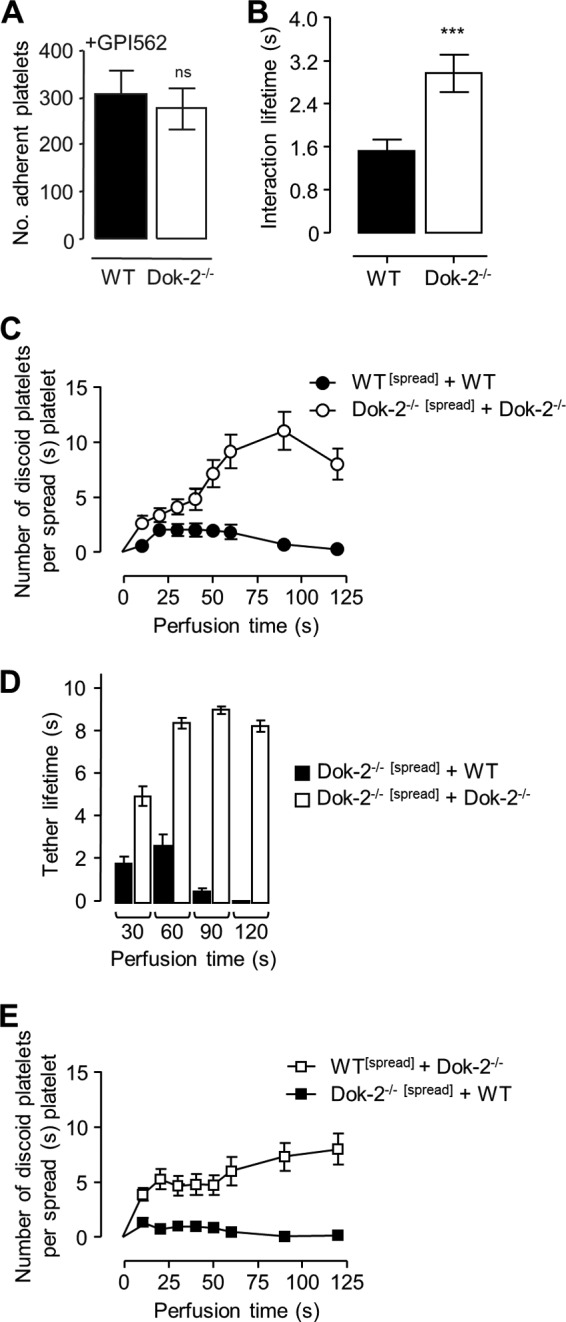FIGURE 2.

Dok-2−/− platelets exhibit increased platelet-platelet interactions through an increased αIIbβ3-dependent tether lifetime. A, whole blood from WT or Dok-2−/− mice was pretreated with the integrin αIIbβ3 inhibitor GPI562 (10 μm) prior to perfusion through type I collagen (50 μg/ml)-coated microslides at 1,800 s−1 for 3 min, and the number of adherent platelets (per 25% of field) was determined as described under “Experimental Procedures.” ns, not significant. B, WT whole blood was perfused over immobilized collagen (50 μg/ml) for 1 min to allow thrombi to form. Non-adherent platelets were removed, and WT or Dok-2−/− whole blood was perfused over the preformed thrombi. The interaction lifetime (s) of adherent platelets was determined by quantifying the number of frames for which a platelet remained attached to preformed thrombi (25 frames = 1 s). ***, p < 0.001. C–E, whole blood from WT or Dok-2 mice was perfused across spread platelets of the same genotype (●, WT[spread]+WT; ○, Dok-2−/−[spread] + Dok-2−/−) or alternative genotypes (■, Dok-2−/−[spread]+WT; □, WT[spread] + Dok-2−/−). C and E, the number of incoming platelets attached to a spread ([spread]) platelet of the indicated genotype. D, the tether lifetime of adherent platelets (s), which was determined by quantifying the number of frames for which a platelet remained attached to a spread platelet (25 frames = 1 s). These results represent six independent experiments (mean ± S.E.).
